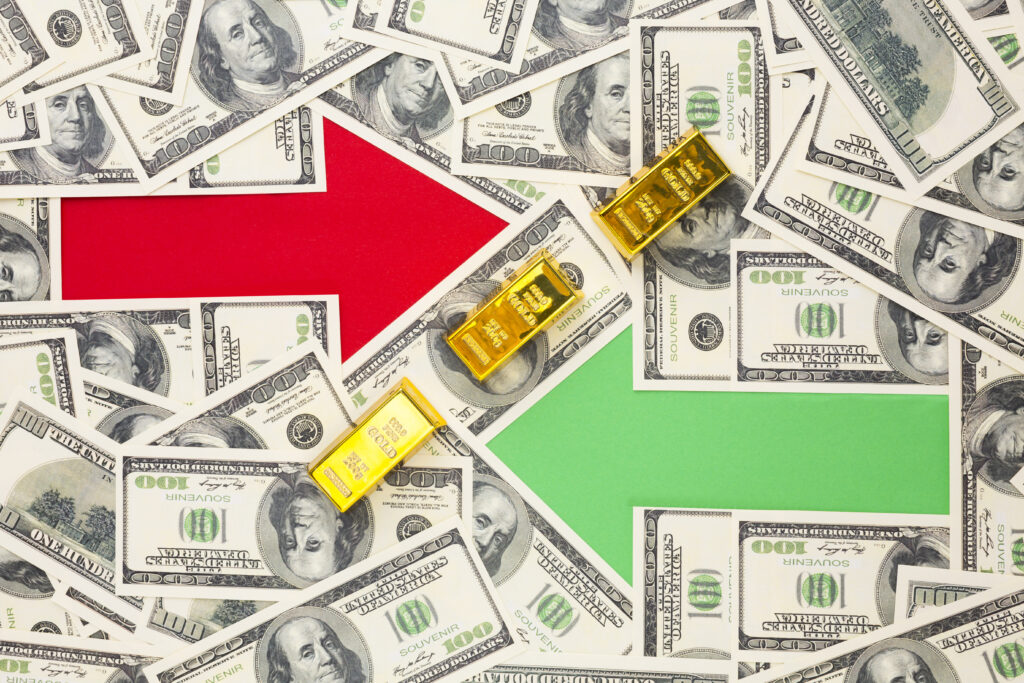
The rupee fell to 87.78 against the dollar and new tariffs announced by the United States which could be a turning point in the history of India’s economy.On Wednesday, the rupee hit Rs 87.78 in trading against one US dollar, a nearly six percentdecline due to newest US tariffs.Falling Rupee: The after-effects on India trade, enterprises and peopleAny move to depreciate their currency would instantly increase domestic costs, announce for the second year in a row the interim -annual results of a large Indian enterprise yesterday.I fell in home from TF PC Today’s Rupee vs Dollar downswing ismore than a metaphor for the Indian economy; it has fundamental implications for both trade, corporate units and everyordinary person living in this vast country.
Rupee vs Dollar Today: What Triggered the Slide?
In early trade on August 26 2025, the Indian rupee depreciated to 87.78 against the US dollar, down 22 paise from its previous close. The main trigger this sudden move was the recent announcement of a further 25% tariff on Indian goods by the US government, to take effect from August 27. Part of rapidly escalating trade tensions, US has pointed to concerns it has over some Indian policies and trade practices. The market’s immediate reaction was an elevated dollar demand from importers expecting more expensive import costs and outflows as investors sought to prepare for the economic impact.ptinews+2
Key Factors Behind the Slide
Several factors led to the monetary convergence of the Rupee.
- US Tariffs: A 25% tariff on Indian exports to the US is followed by pre-existing rates. This brings the total to 50% in some cases.
- Foreign Portfolio Outflows: Persistent selling by foreign investors in Indian stocks harasses the Rupee.
- Strong Dollar & Global Headwinds: A strong US dollar index and weak global market sentiment have made things evenworse for the
- Central Bank Actions: The Reserve Bank of India (RBI) has been like a pool, half-empty but still a little hopeful. It did itsutmost to temper the fall, but there were market dynamics and policy priorities in the way. Consequently the RBI wasgranted quite a bit of flexibility, particularly so export competitiveness could be shored up
A Snapshot: Rupee vs Other Currencies
Below is a comparative table illustrating the Indian rupee’s position against several global currencies as of August 26, 2025, giving context to the rupee vs dollar today narrative:tradingeconomics
| Currency Pair | Value (INR per Unit) | Change (Year) |
|---|---|---|
| USD/INR | 87.78 | +4.5% tradingeconomics |
| EUR/INR | 101.99 | +8.9% tradingeconomics |
| GBP/INR | 118.03 | +6.7% tradingeconomics |
| AUD/INR | 56.78 | -0.1% tradingeconomics |
US Tariffs: What Do They Mean for Indian Exports?
In the most recent US move over trade, India has a record 60.2 billion dollars of its goods hit with 50 percent tariffs–onechunk having just been tacked onto an earlier 25% increase tariff. Textiles, jewels, seafood in particular would be severelyaffected by these soaring prices; carpets and furniture are among other major items that will feel it too hard as a result.The Chinese, Vietnamese & Mexico are likely to profit from supplies which used to come through. If such a situationcontinues, without a manner way out I’m afraid there will — almost all production of good will be ruined and livingstandards could crash.timesofindia.indiatimes
If this continues, it’s going to be increasingly difficult for labour-intensive industries.” Unlike its Indian counterparts in other sectors however, Times of India quoted a senior executive.”In the worst case scenario, commented another sourcefrom within the ministry, “our current exporters will see reductions in volume of up to 70%.
This is likely to lead to large-scale unemployment and may also cause disruptions in the country’s place on internationalassembly lines.
Table: Impacted Sectors and Projected Export Change
| Sector | Export Value FY2025 ($B) | Projected FY2026 ($B) | Export Volume Change |
|---|---|---|---|
| Textiles/Apparel | 16 | 5 | -70% timesofindia.indiatimes |
| Gems & Jewellery | 15 | 7 | -53% timesofindia.indiatimes |
| Carpets/Furniture | 10 | 2 | -80% timesofindia.indiatimes |
How the Rupee’s Fall Impacts the Indian Economy
Imported Inflation
As the rupee falls against the dollar today, imported goods — especially crude oil, electronics, and industrial inputs — become costlier. This imported inflation can ripple through to consumer prices, reducing discretionary income and eroding purchasing power.cleartax+1
Trade Balance and Current Account
The higher cost of imports worsens the trade deficit, putting further pressure on the rupee. Conversely, a weaker currency can make exports more competitive if tariffs don’t negate this advantage.cleartax+1
Borrowing Costs for Indian Firms
Companies with significant foreign currency debt must now pay more in rupee terms to service those liabilities. This can squeeze margins for sectors like aviation, oil & gas, and infrastructure.cleartax
Impact on Stock Market and Investments
Market volatility has increased, with FIIs (Foreign Institutional Investors) pulling billions from Indian equities amid uncertainty. However, certain sectors like IT and FMCG, with less exposure to US exports, are more resilient.economictimes+1
Historical Perspective: Rupee vs Dollar Today vs Past Trends
The weakness in the rupee is not isolated — the USD/INR rate rose by 1.1% in the past month and has depreciated by over 4.5% year-on-year.wise+1
Table: Historical Rupee vs Dollar Exchange Rate
| Date | USD/INR Rate | Monthly % Change | Yearly % Change |
|---|---|---|---|
| 26 Aug 2025 | 87.78 | +1.1% tradingeconomics | +4.5% tradingeconomics |
| 26 Jul 2025 | 86.82 | – | – |
| 26 Aug 2024 | 84.02 | – | – |
Comparative Global Impact
Despite more modest global risk aversion, some other emerging market currencies have been depreciating like India’scurrency, but a smaller fall. The difference is largely because of trade policy headwinds. US sanctions aggravate India’ssituation as they are aimed at the country and not others. To the extent countries like Vietnam and China are beneficiariesof such trade diversion, this has not helped India.cleartax+1
RBI’s Role and Possible Policy Response
Reserve Bank of India has actively been defending the rupee on an intermittent basis, particularly around key resistance levels such as 87.80-87.95, and is willing some degree of weakness to aid export competitiveness. The RBI has to strike afine balance by reining in inflation even as it ensures export competitiveness.
Possible actions include:
- FOREX: Action of selling dollars from the reserves to support the rupee.
- Changes in interest rates : To influence the flow of capital if inflation is under control.
- Communication: Giving markets and investors confidence about trajectory of policy, goals for inflation.
Outlook: Where Is the Rupee Headed?
Given the current market forecast and economic models, at the end of this quarter, the rupee is expected to slip down to87.84; and within 12 months unless there is some big ol’unexpected turn-around in its fate &, somewhere (so far) hasn’tappeared over the horizon or been imagined, maybe it will jump up as high as 88.55.tradingeconomics
What Should Businesses and Investors Do?
Importers and companies that are heavily indebted with dollar exposure must beproactive on their hedges.Diversify Export Markets: The types of products and client regions that rely solely on the U.SAhave to change gradually through time as well.Monitors rbi guidance on policy signals, which can mean hints of thecurrency or interest rate direction in store.
Rupee vs Dollar Today: Key Takeaways
- It has depreciated against the dollar to 87.78 and this will involve the combined impact of US tariffs, capital flight and international uncertainty.
- India faces a potential 43% drop in US-bound shipments for certain industries, this could result in job losses and possiblystagnation.
- There is a significant risk of imported inflation, chiefly in the form rising costs for fuel, electronics and production inputs.
- The RBI may decide to try and buy time, but balancing its goal of supporting exports against the need to bend the pricingcurve is harder still.
- Businesses and consumers will have to prepare themselves for lasting instability and higher costs in the short to medium term.
Frequently Asked Questions (FAQs)
1. Why did the rupee fall to 87.78 against the US dollar today?
The rupee dropped due to heightened demand for dollars amidst fresh US tariffs on Indian goods, persistent foreign investment outflows, and global market volatility.cnbctv18+2
2. Which Indian sectors are most impacted by the new US tariffs?
Labour-intensive sectors such as textiles, gems & jewellery, carpets, and furniture are being hit hardest, facing a combined 50% tariff on exports to the US.timesofindia.indiatimes+1
3. How does the rupee’s fall affect ordinary Indians?
A weaker rupee raises the price of imported goods such as crude oil, electronics, and grains, potentially driving up inflation and impacting the cost of living.tradingeconomics+1
4. What is the RBI doing to address the rupee’s weakness?
The RBI is intervening selectively in the forex market to stabilize the rupee and prevent excessive volatility, while monitoring inflation and trade competitiveness.economictimes+1
5. What is the outlook for the rupee vs dollar today in the near future?
Analysts expect continued pressure on the rupee, with a possible range of 87.84–88.55 vs the US dollar over the coming months if global and policy headwinds persist.tradingeconomics







